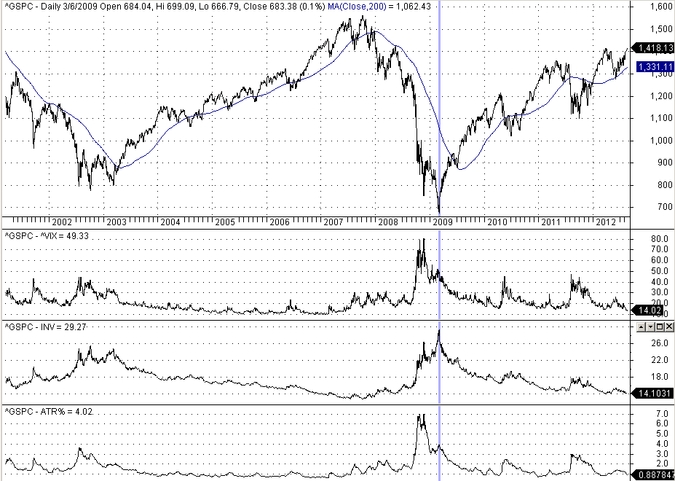VIX is a derivative of price and no derivative of price can predict price. VIX is a non-linear function of the inverse of the price of a security. When prices rise, VIX falls and when prices fall, VIX rises, basically this is what happens with a few minor twists.
According to Wikipedia:
The VIX is calculated as the square root of the par variance swap rate for a 30 day term initiated today. Note that the VIX is the volatility of a variance swap and not that of a volatility swap (volatility being the square root of variance, or standard deviation). A variance swap can be perfectly statically replicated through vanilla puts and calls whereas a volatility swap requires dynamic hedging. The VIX is the square-root of the risk neutral expectation of the S&P 500 variance over the next 30 calendar days. The VIX is quoted as an annualized standard deviation.
Now, if the above sounds like Mandarin to you, there is a better way. This is the common sense way, unfortunately the way under attack in this society:
On the daily S&P 500 chart of daily closing prices, the top indicator pane is the VIX. The middle indicator pane is the inverse of the S&P 500 price times 20,000 and the bottom pane the Average True Range of the last 14 days. What do you see?
I see very few differences in terms of overall behavior. All three have basically the same behavior with respect to price action. There is a difference at the 2009 bottom when the VIX and the ATR(14) have already made a top but the inverse of price naturally is at a maximum. Otherwise, the same behavior. Basically, for all practical purposes, the Mandarin above can be translated to a “simpler” statement of the form:
VIX = k(P)/P
meaning that the VIX is a function of the inverse of price P multiplied by a constant k that is – in general- a function of price. Does this have any predictive capacity? Absolutely none.
If you found this article interesting, I invite you follow this blog via any of the methods below.
Subscribe via RSS or Email, or follow us on Twitter
If you have any questions or comments, happy to connect on Twitter: @mikeharrisNY
Charting and backtesting program: Amibroker
Technical and quantitative analysis of major stock indexes and 34 popular ETFs are included in our Weekly Premium Report. Market signals for position traders are offered by our premium Market Signals service







